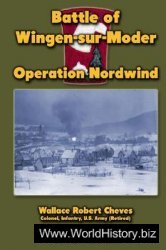Absolute dating Any form of dating material remains that yields a calendar-based date range and as used here, usually refers to radiocarbon dating of organic materials.
Bit wear analysis Macro and microscopic study of the lower premolars of ancient horses to determine the presence of abrasion marks suggestive of bitting and therefore, use of horses for transport.
Eneolithic A technology-based period of time between the terminal Neolithic and early Bronze Age when copper metallurgy was practiced. This period is also sometimes referred to as the Chalcolithic in western Eurasia and more broadly as the Early Metal Age in eastern Eurasia.
Kurgan Term associated with Eurasian steppe archaeology referring to an artificial mound made of earth or stone, or both, and covering a burial.
Mobile pastoralism Also known as nomadic pastoralism and defined as a subsistence economy based on the herding of animals by way of periodic residential movement.
Scythian A term used to refer to a specific Iron Age group of steppe peoples in western Central Eurasia but also refers to a material culture horizon having artifact types, styles, and cultural and technological practices in common and found across Central Eurasia.
Steppe Diverse forms of grassland that characterize major vegetational zones across Central Eurasia ranging from forested or alpine steppe to desert or arid steppe.
With inland seas. Beyond these mountains and deserts are the temperate regions of Eurasia that gave rise to pristine civilizations built upon intensive agriculture, urban centers, and aggregated populations. In contrast, Central Eurasia is arid and cold, having extreme shifts in seasonal temperature, low population densities, animal centered subsistence economies and cultures adapted to this harsh setting. With time, the first Central Eurasians adapted and prospered under these conditions, such that their descendants eventually epeopled the New World, forged roads of communication between Old World civilizations, and assembled some of the most impressive empires in human history.
The sociocultural strategies that opened the Eurasian steppe lands to human habitation provide an underlying commonality to the prehistory of this diverse macro-region. We focus on the eastern flank of Central Eurasia, an area where pastoral nomads still drive their herd animals among grasslands, forests, and deserts today. The historical geographer, Owen Latti-more, used the term ‘Inner Asia’ for this area which overlaps the borders of several contemporary nations. For our purposes, Inner Asia comprises Mongolia and Inner Mongolia, Xinjiang, Gansu, and Ningxia provinces of northwestern China, Eastern Kazakhstan, and the South Siberian regions of Altai, Minusinsk basin, Tuva, Baikal, and Buriatiia (Figure 1). When influential developments occur on the periphery of Inner Asia, we expand our discussion to include those regions.




 World History
World History









